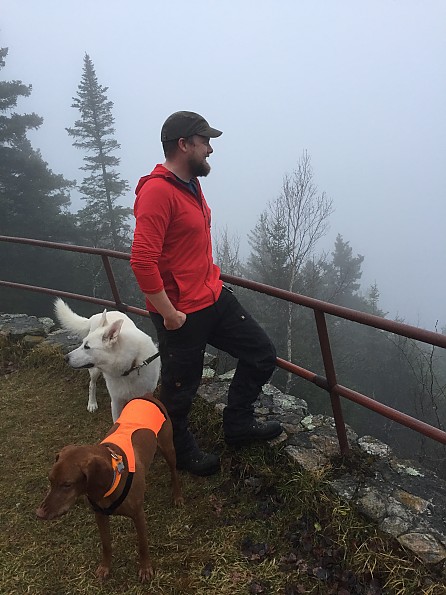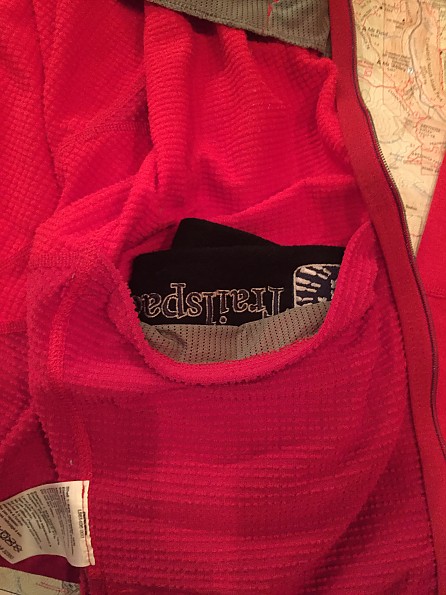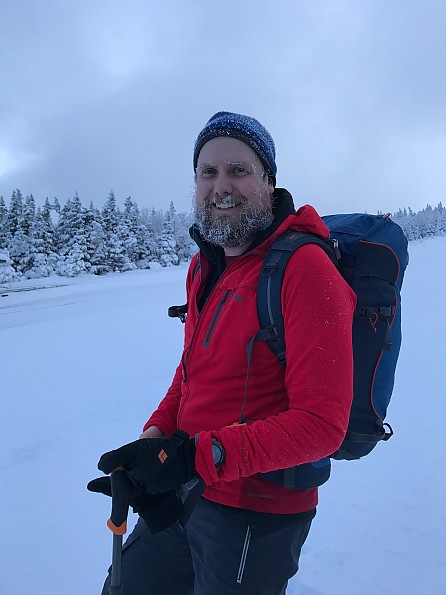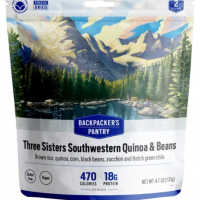Outdoor Research Transition Hoody
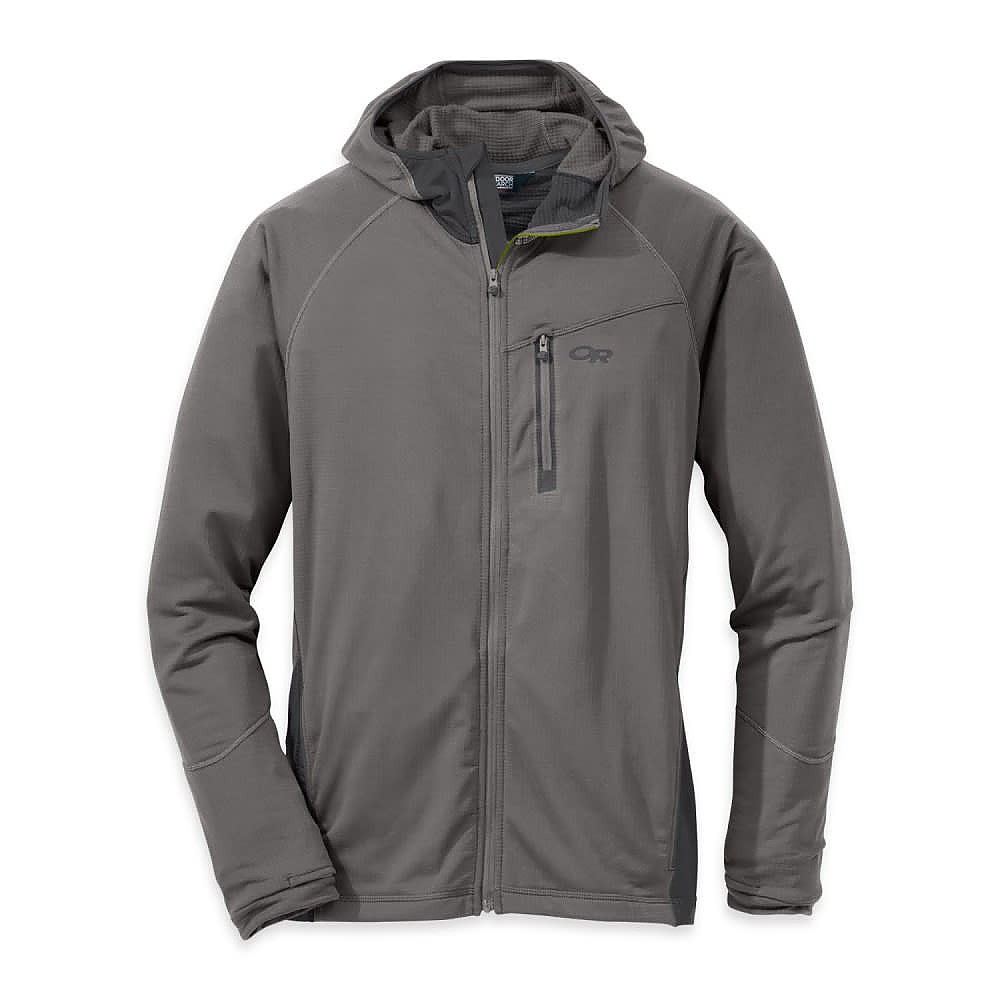
The Outdoor Research Transition Hoody is a bare bones fleece that integrates perfectly into a 3+ season layer system. Highly recommended for hiking, snowshoeing, ski touring, fat biking, or around town.
Pros
- Perfect for layering
- Comfortable against skin
- Balaclava style hood
Cons
- Grid fleece can grab base layer
- Hip pockets do not have zippers
I tested the Outdoor Research (OR) Transition Hoody between Fall 2016 and Winter 2017 in the White Mountains region of New Hampshire. Temperatures ranged from the mid 50s to just below zero. The Transition Hoody was part of my layer system while hiking, snowshoeing, cross country skiing, alpine touring, and fat biking. It is safe to say I wore this hoody all the time because I found it to be a perfect layer.
Fit & Comfort:
The OR Transition Hoody is categorized as trim fit, which means it is a little snugger than a standard fit garment. That being said, I am 5' 10" and around 180 pounds and fit comfortably in a size large. The hoody had enough room to fit a base layer plus an additional lightweight layer beneath it. However I found it started to get a little tight if I put more than the two layers beneath or if a base layer was too thick.
The Transition Hoody was trim enough to fit well underneath a hard shell or puffy jacket. The sleeves are long enough to allow full arm stretch and rotation without rising up the wrist. They extend to mid wrist and include thumb loops on the wrist cuffs to secure the sleeves but I did not find myself using them. The hood fit well over my head and had ample stretch to fit over a beanie or even a helmet when needed. The hood is a balaclava style so that when the jacket is fully zipped up the hood closes mid-chin. This creates a very tight seal keeping out any wind or cold.
The Polartec fabric was soft and comfortable against the skin and did not create any rubbing or pilling of base layers. The only thing that I found to be of mild annoyance was that the fabric would hold onto base layers. This meant that if I did not tuck in my base layer it would eventually ride up if I was making a lot of movements with my arms. Again, this is a pretty minor issue that plagues most fleece jackets and was easy to resolve by tucking in my shirt.
Features and Adjustability:
The Transition Hoody is designed with elastic cuffs, hem, and hood opening. This design eliminates the need for extra pulls or hook and loop adjustments. I found there to be enough stretch so that the cuffs fit around gloves, the hemline wrapped nicely around base layers, and the hood fit around hats, helmets, or the bare head. The elastic retained its elasticity after months of use and did not show any signs of wear or fatigue.
The key design feature of the Transition Hoody is the Polartec Power Grid. The fabric is a series of squares aligned in a grid with small channels between each square. The advertised purpose is for heat and moisture to travel out of the garment through the channels, speeding up the wicking ability. The raised grids provide the body and insulation of the fleece.
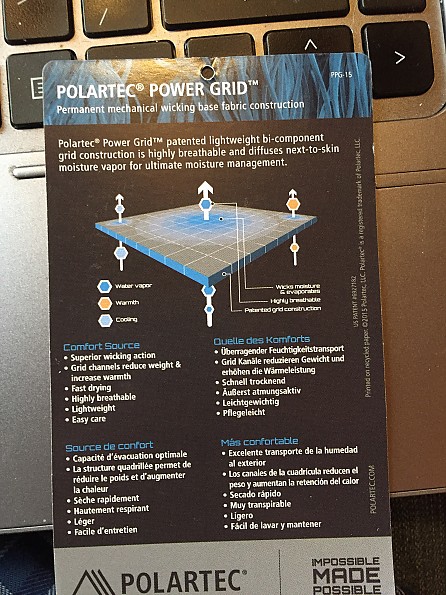
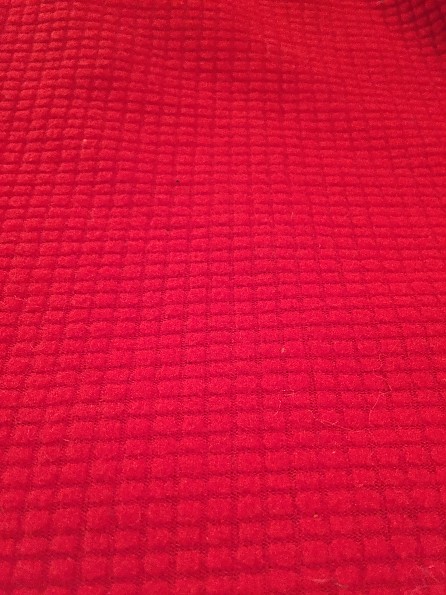
While I cannot determine if moisture traveled through the channels I do know that the Transition Hoody kept me both warm and dry during high aerobic activities like fat biking and skinning.
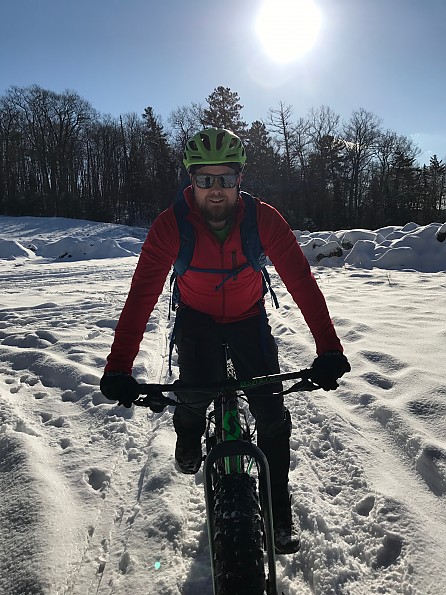
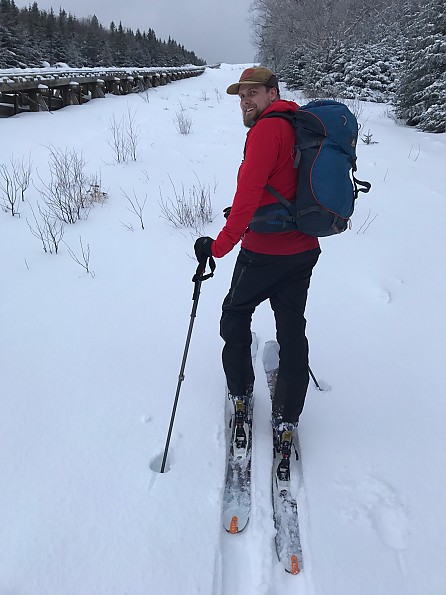
In addition to the Polartec Power Grid design, OR placed thinner stretch material in high wear areas. These include under the arms, around the hips, and at the base of the neck/upper back.
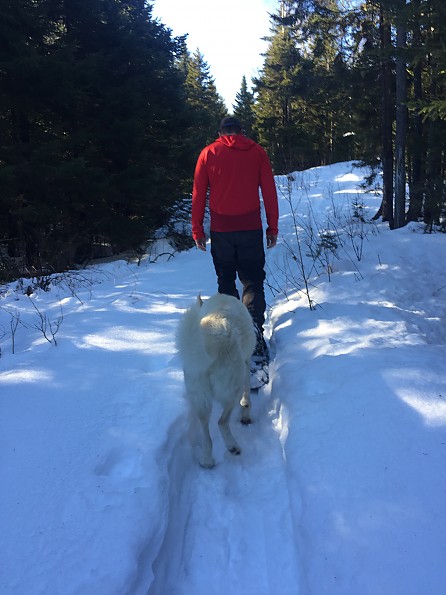
The Transition Hoody has a zippered chest pocket as well as two non-zippered hip pockets. On the inside there are two pockets as well. The chest pocket is large enough to hold a smartphone, map, or sunglasses. I found I stuck my phone in there most of the time for easy access since it was away from the pack straps and it was close to my body to keep it warm during cold trips.
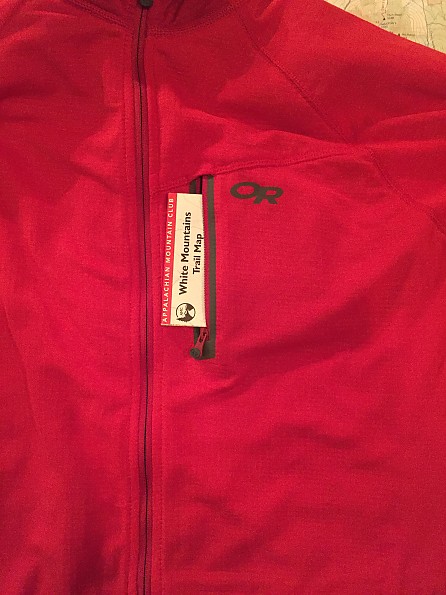
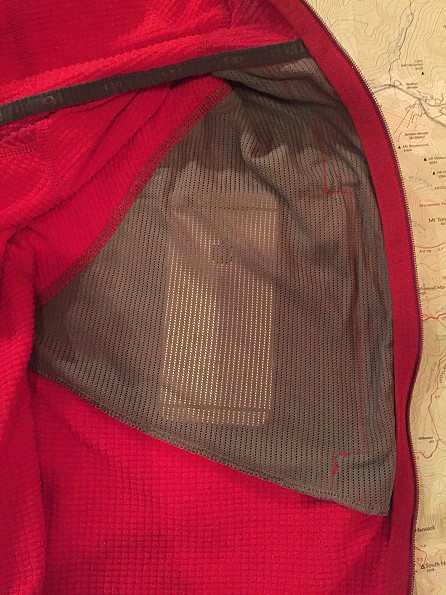
The external hip pockets are large enough for a map, sunglasses, or a snack. I would caution anyone from putting valuables in these pockets as they do not zip. I put a bag of dog treats in one and halfway along a hike found the bag was no longer there. Luckily it was an out and back trip and my dog found them on the way to the car. These pockets sit just above the hip belt of a pack which allows access when wearing a pack.
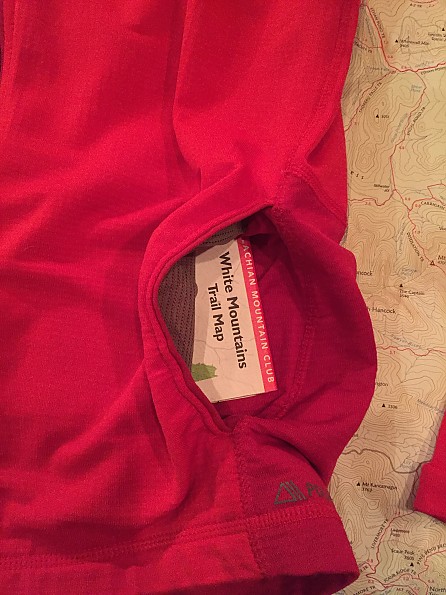
On the inside of the hoody there is a pouch style pocket on either side. These have wide horizontal openings perfect for a beanie or thing pair of gloves.
Water Resistance:
The Transition Hoody is not designed to shed water and should not be worn as the only outer layer if it is raining or snowing. If you do this, you will get wet.
Breathability and moisture:
As mentioned previously the Transition Hoody controls moisture well by utilizing design features that help dump heat. Even after hard exercise that produces a lot of sweat the fleece did not feel damp or uncomfortable against the skin. I also found that when the jacket would get wet through sweat or precipitation it would dry in a short period of time. I was able to wear it ski touring and the morning, hang it up on the back of the seat on the drive to a fat bike ride, and then wear it during the ride after only about an hour of transition time. This time would be decreased in more conducive conditions like hanging in a warm house instead of a moderately warm truck.
Warmth:
The Transition Hoody became a key part of my fall and winter layer system because it helped keep me warm while being active. When on the skin track I would wear the transition hoody paired with a thinner pullover (the OR Whirlwind Hoody, review to come at a later date), and a merino base layer. As long as I was moving I was comfortable in this combination even when temperatures dropped to the single digits.
Layering:
The Transition Hoody found its place right in the middle of my layer system and was with me on all trips the last few months. When the temperatures were warmer, between 40 and 50 Fahrenheit, I would wear it as my outer layer with a single base layer of either a long sleeve or short sleeve merino shirt. As the temperatures dropped I would add an additional thin hoody, puffy, hard shell, or combination of all depending on conditions. No matter the combination, it always included the Transition Hoody because of its warmth and flexibility.
Abrasion:
Over five months of use I have seen no signs of wear. OR designed the Transition with stretch fabric in all the areas that experience high movement and friction, around the hips, bellow the arms, and at the upper back. This helps prevent soft fabric from pilling under packs or rubbing against more abrasive fabrics. This design feature plus quality construction has created a well-made garment that still looks new.
Conclusion:
I had a great time testing the OR Transition Hoody and highly recommend it to anyone looking for a mid-layer fleece that can be used during any active outdoor adventure. Whether it is backcountry skiing, biking, hiking, snowshoeing, cross country skiing, or just traveling to and from the trailhead. The Transition Hoody stood up to the fluctuating conditions experienced in Northern New Hampshire and allowed me to adapt and stay comfortable so I could stay out longer and have more fun.
Source: received for testing via the Trailspace Review Corps
(Sample provided by Outdoor Research for testing and review)
Your Review
Where to Buy
You May Like
Specs
| Men's | |
|---|---|
| Price |
Historic Range: $67.48-$150.00 |
| Women's | |
|---|---|
| Price |
Historic Range: $89.97-$150.00 |


